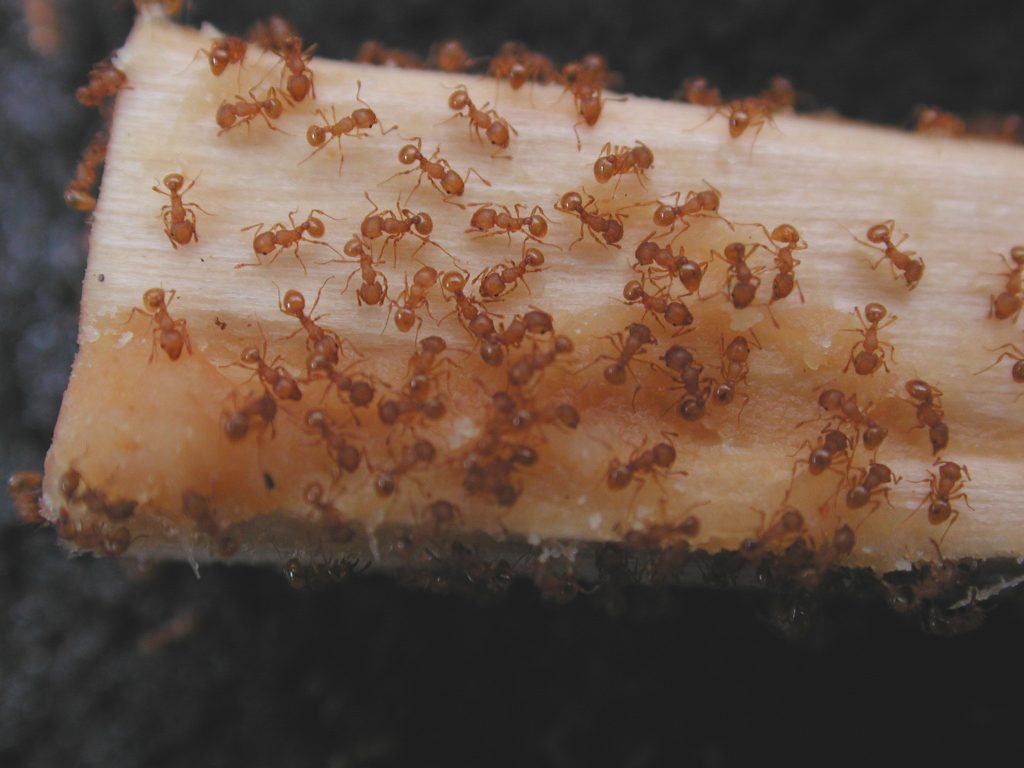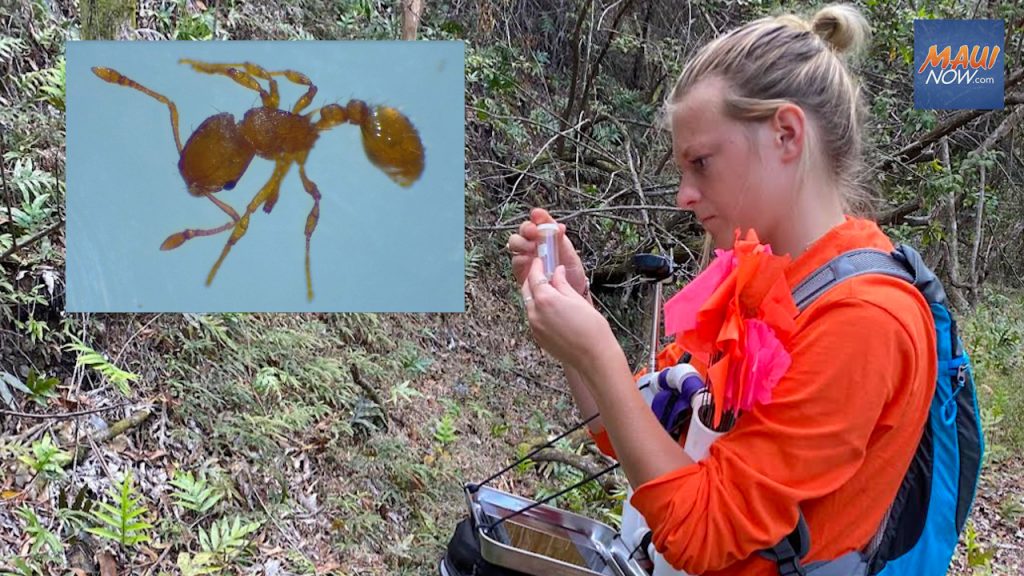New detection of Little Fire Ant highlights vigilance

The recent detection of a new population of Little Fire Ant in Wailua River State Park on Kauaʻi, was confirmed by a sample submitted by a concerned citizen, showing how essential residents are to the process.
The Hawaiʻi Department of Agriculture and the Kauaʻi Invasive Species Committee surveyed the surrounding area and currently estimate the new infestation covers 13-35 acres. Surveys, led by KISC, to determine the full extent of the infestation are ongoing.
Curt Cottrell, Administrator of the DLNR Division of State Parks said, “The location of this LFA population is concerning because of its proximity to the Wailua River. LFA can “raft” along waterways allowing them to spread far greater distances.”
“Our current priority is to find a solid perimeter of the infestation,” said Tiffani Keanini, KISC Manager. “After we identify the size and terrain, we begin to develop a response plan, brainstorm management strategies, and list resources needed to address the population.”
This comes during “Stop the Ant Month” in Hawaiʻi, a multi-agency effort that encourages community awareness and participation to combat the negative economic and environmental impacts of LFA. KISC works with various DLNR divisions, HDOA, Hawaiʻi Ant Lab and the Hawaiʻi Invasive Species Council for access, resources, and technical expertise.
KISC asks residents to collect ants on their properties by using a smear of peanut butter on several chopsticks and leaving them out for about an hour. The peanut butter attracts ants. Sticks should then be carefully collected and sealed in a zip-top bag and frozen for 24 hours to kill any ants, then dropped off or mailed to the KISC office for identification.
Through the collective efforts of HDOA, KISC and the Hawaiʻi Ant Lab, previous attempts to contain LFA on Kauaʻi have been largely successful.
Prior to this year, LFA were established at three locations on Kauaʻi.
- 11 acres in Kalihiwai (detected in 1999)
- 2.5 acres in Kilauea (2019)
- 12 acres in Moloaʻa (2020)
Ant populations at Kalihiwai and Kilauea have been controlled and reduced to near-undetectable levels. Treatment efforts at Moloaʻa are ongoing and recent surveys show the population is under control.
“New detections of little fire ants are always concerning,” said Phyllis Shimabukuro-Geiser, chairperson of the Hawaiʻi Board of Agriculture. “As with previous incidents, we appreciate the cooperation between the multiple agencies in helping to contain infestations and prevent the further spread of these invasive ants.”

Invasive little fire ants discovered in Haʻikū, Maui
Here on Maui, a new population of the invasive little fire ants was discovered in Haʻikū in late August. A team with the Maui Invasive Species Committee estimates the infestation to include approximately four-to-six acres.
Little fire ants are native to South and Central America and are thought to have arrived in Hawaiʻi in the late 1990s. The ants are tiny – only as long as a penny is thick. They form supercolonies with multiple queens, blanket landscapes, and outcompete most other insects in the area, both native and non-native. Elsewhere in the world, little fire ants have had devastating impacts on native biodiversity, according to MISC.
Reports from community members have led to the detection of 13 of the 19 known infestations on Maui.
Once detected, each infestation is treated for approximately one year, then monitored to ensure elimination.
The new infestation in Haʻikū will make eight little fire ant sites on Maui under active treatment.
Six sites are in the monitoring phase (ants not currently detected), and five have been eradicated. Maui’s largest little fire ant infestation in Nahiku has shown promising results: 95% of the samples collected in last year’s survey efforts were empty, indicating that the treatment of this 175-acre site is working. A comprehensive survey will take place later this month to further gauge progress.










